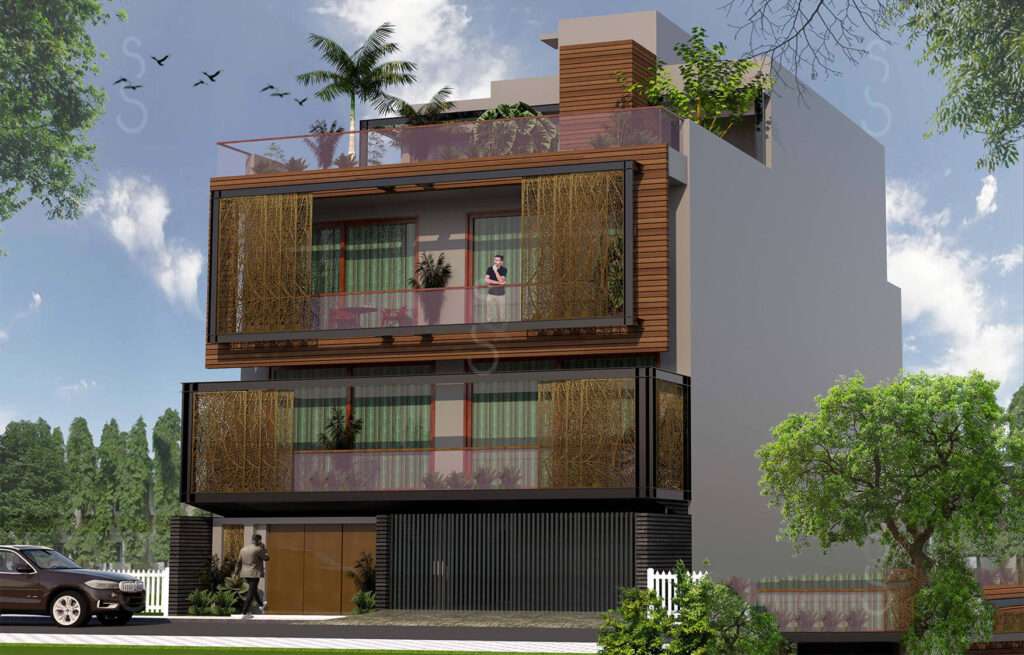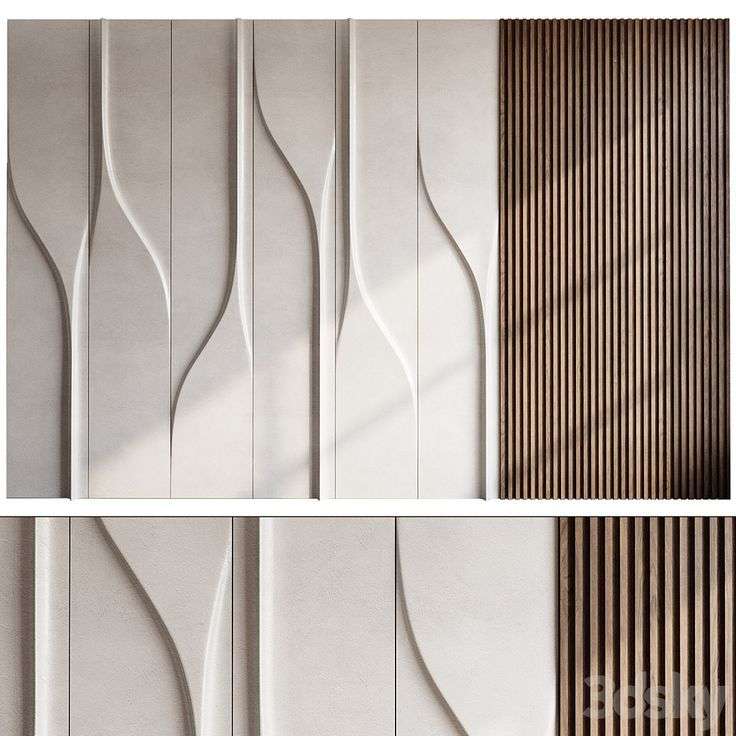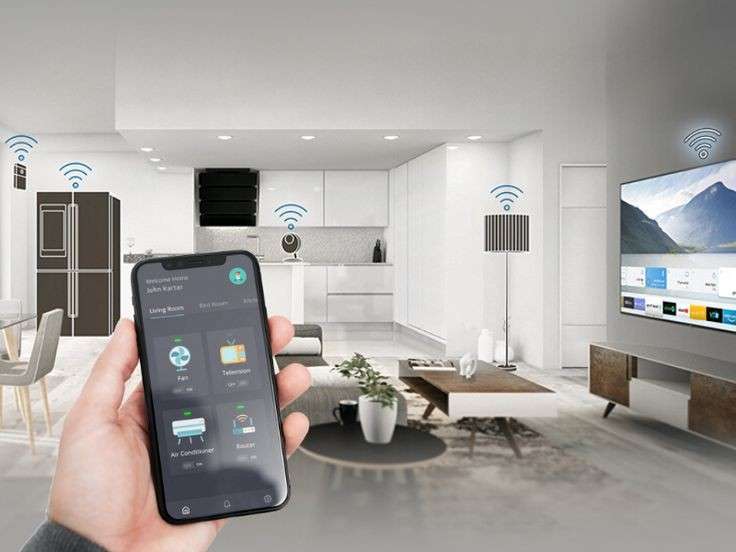At Scale & Structure, we believe that good design is not just about what looks beautiful, but about creating spaces that serve a deeper purpose—spaces that foster a sense of clarity, comfort, and intentionality. Every piece of furniture, every color choice, and every layout decision should work together to support the overall experience of the space, enhancing not just the aesthetic but the emotional and functional needs of the people who live in it.
In this blog post, we’ll explore how design meets intention and clarity, focusing on how thoughtful design choices can lead to more harmonious, effective, and fulfilling living environments.

1. Design with Purpose: Understanding Your Needs
The first step to creating a space that reflects intention is understanding the needs and desires of those who will use it. It’s essential to define the purpose of each room before making any design decisions. Is your living room a space for relaxation and family time, or is it a place to entertain guests? Will your home office prioritize comfort or productivity?
At Scale & Structure, we work closely with our clients to identify the primary function of each space and ensure the design reflects that purpose. By understanding the lifestyle needs of our clients, we can create spaces that feel authentic, purposeful, and tailored to their daily life.
Key Takeaway: Before starting any project, ask yourself: What do I need this space to do for me? Knowing the function of your space is the first step to designing with intention.
2. Clarity Through Simplicity: Embrace Clean Lines and Minimalism
One of the most powerful tools in creating intentional spaces is simplicity. Clean lines, open spaces, and a minimalist approach to decor help create clarity in a room, allowing it to feel balanced and organized.
Clutter is often the enemy of clarity. A room filled with too many items can lead to visual chaos, making it difficult to relax or focus. At Scale & Structure, we recommend paring down to only what is necessary and beautiful—focusing on functional furniture, carefully curated décor, and creating open spaces that allow you to breathe.
- Clean Lines: Choose furniture with simple, elegant lines. Avoid overly ornate pieces or excessive detailing that can overwhelm the space.
- Open Spaces: Leave room for movement. Allowing for spaciousness not only creates a visual calm but also promotes better flow and functionality.
- Meaningful Decor: Select artwork, furniture, and accessories that contribute to the room’s function and emotional ambiance, rather than just filling space.
By embracing simplicity, you make room for clarity—both in the design itself and in how it impacts the people who live in the space.
Tip: Keep surfaces clear and prioritize storage solutions that keep everyday items out of sight. A well-organized space immediately promotes clarity and peace of mind.
3. The Power of Color: Setting the Tone
Color is one of the most influential design elements when it comes to creating intentional spaces. The color palette you choose sets the tone and mood of a room. For example:
- Calming tones like soft blues, greens, and neutral hues are perfect for spaces meant for relaxation, such as bedrooms or meditation areas.
- Energetic hues like bright yellows or oranges can bring life and vibrancy to social areas like kitchens or living rooms.
- Sleek neutrals like gray, white, and black offer a timeless, minimalist aesthetic and can work well in contemporary or sophisticated settings.
At Scale & Structure, we use color not just for aesthetic appeal but to evoke specific emotional responses and align with the intended use of the room. Whether you want to promote productivity, calm, or creativity, the right color palette can make all the difference.
Tip: Choose colors that align with the emotional purpose of the room. Consider using accent walls or strategically placed décor to add depth and dimension without overwhelming the space.
4. Furnish with Intent: Curate, Don’t Overcrowd
When it comes to furniture, less is often more. A well-chosen piece of furniture should serve both a practical and aesthetic purpose. Avoid overcrowding rooms with unnecessary items. Instead, focus on selecting pieces that enhance the flow of the space and meet its intended function.
- Multi-functional Furniture: Invest in pieces that can serve more than one purpose. For example, a sofa with built-in storage or a dining table that doubles as a workspace can help minimize clutter while adding to the space’s functionality.
- Quality over Quantity: Instead of filling a room with many furniture pieces, select high-quality items that are timeless and versatile. This approach ensures that every piece serves a purpose, adding value to the space rather than contributing to clutter.
By curating your furniture choices with intention, you create an atmosphere that feels both purposeful and calm, rather than chaotic.
Tip: Select furniture with clean, simple silhouettes and functional designs. Consider each item’s role in the room before making a purchase, ensuring that it aligns with the space’s overall purpose.
5. Lighting: A Tool for Mood and Focus
Lighting is essential to creating spaces that feel intentional and clear. Well-lit spaces foster better mood and productivity, while poor lighting can make even the most beautiful design feel heavy and uninviting.
- Natural Light: Emphasize natural light whenever possible. Large windows, glass doors, and strategic placement of mirrors can help bring more light into a room, making it feel open and expansive.
- Layered Lighting: Use a combination of ambient, task, and accent lighting to add depth and flexibility to a room. This ensures that the space can be used for various activities, whether it’s relaxing, reading, or socializing.
At Scale & Structure, we incorporate lighting as both a functional and aesthetic element in our designs. The right lighting can create a sense of warmth and clarity, making a space feel inviting and purposeful.
Tip: Consider installing dimmers or using warm-toned light bulbs for a more calming, adaptable lighting environment that can change according to the time of day and your needs.
6. The Importance of Flow: Connecting Spaces Naturally
Flow is an essential aspect of design that creates a sense of ease in a home. It’s all about how spaces transition from one to the next. A room with good flow will feel harmonious and allow for natural movement.
- Open Layouts: In spaces like living rooms or kitchens, an open layout can help ensure a smooth transition between different functional areas.
- Strategic Furniture Placement: Arrange furniture to create clear pathways for movement and ensure that the room’s layout is both comfortable and practical.
Designing with flow in mind helps maintain a sense of clarity and balance, ensuring that no room feels cramped or difficult to navigate. When the flow is seamless, the home feels more cohesive and inviting.
Tip: Use rugs, furniture, and architectural elements to define different areas while maintaining an open, unobstructed path throughout the space.
7. Incorporating Nature: Bringing the Outdoors In
Biophilic design—the practice of incorporating natural elements into indoor spaces—can help bring clarity and calm to your home. Whether through the use of natural materials like wood or stone, or adding plants and greenery, biophilic design helps connect the indoor environment to the natural world, promoting a sense of peace and balance.
- Plants: Indoor plants have been shown to reduce stress and improve air quality. Incorporating greenery into a space, whether through large potted plants or small tabletop arrangements, can add life and calm to any room.
- Natural Materials: Wood, stone, and other natural materials help ground a space and create a sense of harmony with nature. These materials bring texture and warmth to a room, making it feel both inviting and balanced.
At Scale & Structure, we are passionate about creating spaces that integrate natural elements to promote well-being. Whether it’s through natural wood finishes or carefully chosen plants, bringing nature indoors helps create a clear, harmonious environment.
Tip: Add plants or natural textures to your design to create a calming atmosphere. Even small touches of nature can make a big impact.
8. Conclusion: Design for Clarity and Purpose
Designing with intention and clarity isn’t just about creating beautiful spaces—it’s about creating environments that enhance the way we live. By making thoughtful decisions about layout, color, furniture, and lighting, you can design a space that feels purposeful, calming, and in tune with your needs.
At Scale & Structure, we specialize in creating spaces that reflect your unique lifestyle while prioritizing clarity, function, and beauty. If you’re ready to transform your home into a space that supports your needs and aspirations, reach out to us today. Let’s create a home that’s more than just a place—it’s a sanctuary of purpose and peace.



